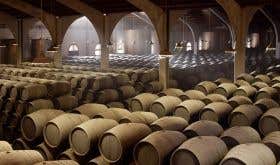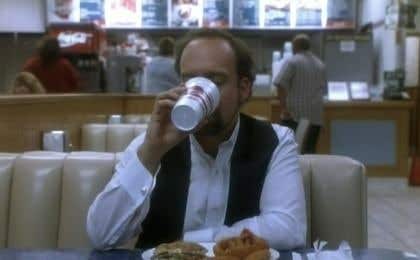Today, the average selling price for Petrus is 164 times that of Louis Latour Beaujolais, as the oracular wine-searcher.com informs us. That will come as no surprise to anyone interested in wine. The first is so famous it’s known only by a single name, like Madonna or Obama or Jancis. The second is a humble appellation whose main claim to fame these days comes from providing mass ablutions for the Japanese.
Yet according to the internet, there’s a restaurant in Washington DC selling the latter for about half the price of the former. And when, dear reader, has the internet ever been misinformed?
Yet this is no mistake. My question, though, is: are you imagining the Petrus as hugely underpriced, or the beaujolais as hugely overpriced?
In fact, it’s the former: the Petrus is $9 and the beaujolais is $5. I should add that this comes from a menu printed in the 1960s, which brings me conveniently to my theme: time, value and fashion.

A fashionable wine list
For the last few decades, wine has been touted as a sure-fire money-spinner. You simply buy the best bordeaux en primeur, store them professionally then cash in a few years later. These wines even gained a new moniker: ‘investment grade’, a term outranked in tastelessness only by those red burgundy fans who inexplicably label themselves ‘Pinotphiles’.
Cocky fine-wine traders once bandied around graphs showing how steeply wine was growing in value, but more recently those lines have grown limp. Release prices for over-hyped vintages started to rocket, and within a few years their resale value plummeted as the market became disenchanted. Those who bought lots of 2009 first-growth bordeaux, for example, find that their nest egg has become a rotten egg, losing as much as one third of its value.
Just last week, this story about China’s flagging interest in wine illustrates part of the reason behind the slump.
It strikes me that the wine world learns little from the lessons of history. Remember, less than 60 years ago, Petrus could ‘only’ command double the price of a lowly beaujolais. Before that, Mosel Riesling went through a phase of being more valuable than the rarest claret, as its producers wistfully tell anyone who cares to listen. Time was when Tokaj from Hungary was the priciest bottle in town.
Surely it becomes inevitable that bordeaux and the beneficiaries of today's wine trends will fall out of favour. The question is not if, but when.
How low can it go? €2.35 per litre for this Bordeaux.
When asked the question above about whether the beaujolais was overpriced or the Petrus was underpriced, I bet that most people would say the latter, because the more believable scenario is that Petrus was being retailed for far less than its market value. This speaks volumes. Firstly, why shouldn’t a beaujolais be worth hundreds of dollars per bottle?
The F word is the answer. The quality of the wine has little to do with it; by far the more important influence is fashion – that is, how supply and demand dictates price. Great bordeaux is not intrinsically better than great beaujolais. Secondly, we have become remarkably accustomed to the insane prices charged for wines at the top end of the market. Bordeaux selling for thousands of pounds per bottle has become so normal that we’re collectively oblivious to the probability of a drop in value – again, not if, but when.
Granted, you could apply a lengthy time frame to any scenario and it will probably come true eventually – monkeys with typewriters and all that. Yes, in a million years, it’s pretty certain that Bordeaux won’t command top dollar. In a thousand, likewise. In a hundred? As the scale gets smaller, change starts to sound less likely, but if you look at how the wine world has altered since 1915, you’d have to be mad to think bordeaux will still have such an inflated value in 2115. So what about in fifty years' time? Twenty?
There’s nothing wrong with people making money in the wine business, but there is a problem with the excessive hyperbole, speculation and ballooning prices. It completely warps the perception of value in wine.
The saying goes that comedy equals tragedy plus time. Right now, it’s certainly tragic that wine prices have become so distorted. No doubt it’ll seem funny one day. Just like comedy, it's all in the timing.















